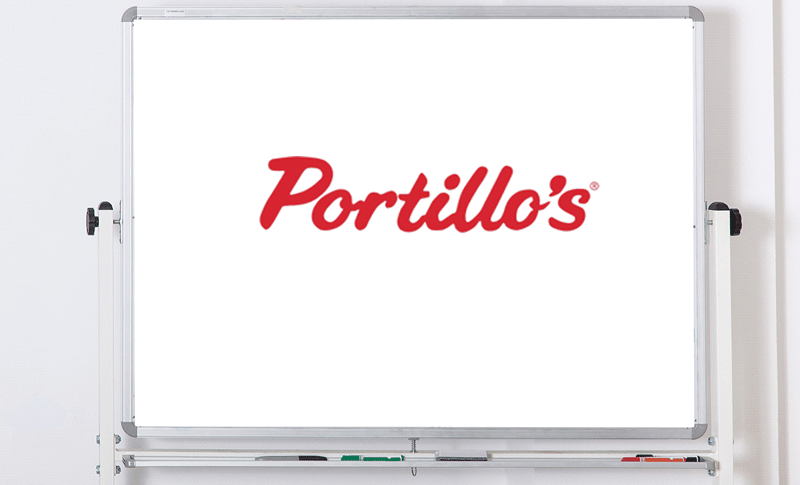Negotiating with a unicorn company out of Silicon Valley, even for an established restaurant brand, can be nerve-wracking. Portillo’s, the Chicago hot-dog institution rapidly expanding into new markets, had one key tactic for getting everything they wanted from its third-party delivery contracts.
Nick Scarpino, the senior vice president who oversees marketing and off-premises operations at Portillo’s, said when he joined the company five years ago it had some experience sending food out with third-party couriers, but not many guardrails around the program.
“If we go back in history,” said Scarpino, “Portillo’s had been an early adopter in working with third-party delivery companies. We’ve been working with one form or another for more than a decade, primarily at one of our downtown Chicago locations. We know that location in terms of transactions done, it’s one of the highest volumes for both Grubhub and DoorDash.”
With some real operating history under the company belt, he could see exactly what had worked and what didn’t. Because of his previous role at Google, he had a decent understanding of what to watch for to ensure a quality partnership to expand delivery beyond the legacy contract. In a very ex-Googler move, he went to the whiteboard.
“We had that agreement for more than a decade, but before I started we didn’t have other agreements. We had the opportunity to start almost from scratch, so I literally wrote on a whiteboard all the requirements to work with Portillo’s from the third-party standpoint,” said Scarpino. “I brought every single delivery partner in and essentially pointed to the whiteboard.”
On the board were the same list companies negotiate for today. It included things like not competing on branded search terms like “Portillo’s Delivery” to ensure that the restaurant floated to the top over third-party networks. It also included a promise from the delivery network that it would deliver orders placed on the company website at the same time as marketplace orders. Having operations to cover all 60 restaurants was a key point, too, but the biggest sticking point, however, was staying “margin neutral.”
“If they order from me or you, I’m going to make the same amount of money. Our first goal is to drive a direct digital sale from Portillos.com and our app,” said Scarpino. “This was unheard of when we started doing it.”
There were a lot of meetings in those early days, and a lot of “no’s” but eventually DoorDash said they would work within the company parameters, even opening markets where Portillo’s had operations.
“They opened up all locations with us, and said ‘we’ll open all future ones with you too,’” said Scarpino. “We have 60 locations, but very high volume, (so) they were happy to have us as their first partner in new cities because they got some volume.”
The big lesson other operators should take from the Portillo’s whiteboard idea is to be strong in negotiations. As much as the third-parties help empower restaurants, they also need restaurants to keep the orders flowing. It benefits nobody if the partnership isn’t mutually beneficial.
Without that, restaurants can turn—validly—to all the complaints about margins, data and marketing. Of course, that volume helped DoorDash, too. A lopsided contract on the restaurant side could simply mean no more networks, a boon for no one except pizza and Chinese brands.


